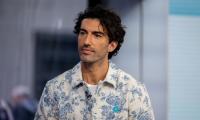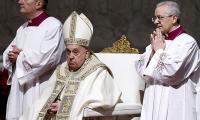The PTI’s diatribe against the JUI-F dharna, and efforts to employ the law to scuttle it is certainly seeped in hypocrisy. The PAT brought to the fore this anarchist style of politicking in the recent past. But it was the PTI that effectively patented it in 2014, used it to paralyse the PML-N’s government and drain legitimacy out of it.
It sought approval and legitimacy from the ‘umpire’. It supported the TLP dharna and employed bigotry as the tool to hammer the last nail in the PML-N government’s coffin prior to Election 2018. And it succeeded.
There is nothing that the Maulana is threatening to do that the PTI and PAT and then the TLP, supported by the PTI, didn’t do before. So talk of immorality of the JUI-F’s purpose or the threat it poses to the state or to public interest or the abuse of madressah students or the need to use force to thwart the protest march is all rather rich coming from the PTI. Many who blame Imran Khan’s brand of divisive and opportunistic politics for setting back the democratic project and polarizing the country are gleeful over IK and the PTI getting a taste of their own medicine.
The Germans call it schadenfreude: the joy of witnessing the trouble of another. So is it okay to be ambivalent with the JUI-F’s march and use of bigotry to squeeze out any moral authority that vests in the PTI’s government because this is poetic justice? No it is not. It is not okay as a matter of law. It is not okay as a matter of politics. It is not good for society. And it is outright destructive for constitutionalism and the hope that normativity of law might trump force as the main guiding influence over our state and society one day.
This isn’t just about IK and what he does or doesn’t deserve. It is about our children too. The Maulana has borrowed a page from the playbook the PTI and TLP read from. He has nothing to lose and everything to gain from this venture. When IK launched Dharna I, he became the challenger taking on the sitting ruler. He didn’t have the numbers to proclaim himself leader of the opposition. But the dharna made him the main opposition leader. He got massive media coverage and the opportunity to bleed a sitting government with a thousand cuts.
The dharna didn’t topple the PML-N government. But it weakened it to an extent where it substantially lost agency. With the waning of the elected government’s moral authority, the leverage shifted. The PML-N government had to ask the army chief to intervene and talk to IK. The triumph of de facto over de jure was for everyone to see. Then we saw #ThankYouRaheelSharif emerge as a major trend. RS had power and got credit for the good. NS had responsibility and got blamed for the bad.
By the time the TLP emerged, the PML-N was already done and dusted as a government. Nawaz was gone. Shahid Khaqan Abbasi was struggling to hold the fort. But the PML-N could still not be written off in Election 2018 and especially not in Punjab. The rise of the TLP and its use of bigotry wounded the PML-N deeply. Its Barelvi vote bank was carted away and its ministers feared for their lives. The TLP emerged as the party with the third largest vote bank in Punjab. The TLP dharna might have been a single largest factor in helping claw Punjab out of the PML-N’s control.
So with the benefit of hindsight, why would the Maulana not give it a go? Post-2018 election, he has been left out in the cold. As a traditional politician, being relevant makes him tick. Like IK in 2014, he is challenging the incumbent. That itself raises his stature. The media will discuss his march incessantly. He gets to rally his supporter base in preparation for the march and build on it with the use of rhetoric and bigotry during the march. He has crash-landed in the centre of Pakistani political drama despite having lost his own seat in 2018.
What is he demanding? He wants the PM and his government to resign. Why? Because he says they stole the election, because they aren’t working to better the condition of the common man and because they aren’t good Muslims. How does one negotiate with those demands? If you can’t give the Maulana what he wants (assuming he wants what he says his wants), what else can you do? Using force to beat up protesters doesn’t work. Nothing sucks legitimacy out of an elected government faster than images of police beating up its political opponents.
If the protesters descend upon Islamabad and just sit around (as the PTI and PAT did in 2014 and the TLP in 2017), it becomes a big nuisance for the government. That offers the protesters the bully pulpit and the ability to run live commentary on what the government is doing. You might limit broadcast of the message but social media gets the job done anyway. The protesters can just pick up and leave with the intent to come back (as the PAT did in 2012). But while they are around, any mistake that the government makes can become fatal.
The PTI has won no laurels for its ability to govern so far. Other than calling the kettle black (which narrative has resonated with our middle class), the PTI has nothing to show for itself since it assumed power. But the party says it has put in place policies that will hurt at first (being tough choices past governments refused to make) but will deliver in time. Almost every political party complains of sabotage as the reason for its inability to deliver. The PML-N presents the PTI’s dharna as such. And now we have the JUI-F’s dharna that will lend the PTI the justification for its dysfunction.
The legal position couldn’t be more unambiguous. Our law and our constitution give no political faction the right to declare that its rival in charge of government lacks legitimacy. The right to protest is located in the right to liberty (Article 9), the right to peaceful assembly (Article 15), the freedom of association (Article 17) and the freedom of speech (Article 19). But the rights of protesters are to be balanced against the rights and freedoms of non-protesters to ensure that the right to protest of one citizen doesn’t impinge on the liberty of any other.
Petitions were filed in the Islamabad High Court against the JUI-F’s march, as were filed back in 2014 against the PTI’s march. On both occasions, the IHC rightly refused to jump into the political thicket. While it clarified the legal position, it left it to district administration to strike the balance and only exercised judicial review where Section 144 powers were being abused (to haul up PTI supporters back in 2014).
The Supreme Court had taken note of the TLP dharna and ruled that while the right to assembly and protest was recognized as a right to preserve and protect the democratic order, it couldn’t be used to overthrow a democratic government or bring about a revolution or insurrection. Justice Qazi Faez Isa authored this SC ruling that supports the PTI’s position against the JUI-F’s dharna. Is it not ironic that the PTI government is vociferously seeking his ouster from the SC at the moment?
Our state doesn’t pay heed to the genuine grievances of those who speak softly. It takes note and responds only to those with the ability to create nuisance. We have a polity driven by the logic of force and not legitimacy or moral authority. Our state has nurtured a society also driven by schadenfreude and not concepts of right and wrong backed by principle. IK might be reaping what he sowed, but Maulana’s politics and those supporting it, including the PML-N and PPP, are only reinforcing the predatory character of our state and society.
The writer is a lawyer based in Islamabad.
Email: sattar@post.harvard.edu
Postman argues that “typographic mind” was yielding to “televisual mind”
Pakistan is well poised to meet opportunities that Artificial Intelligence will offer for developments in industries
Smog isn’t merely 'environmental' issue anymore, it is public health emergency, socioeconomic burden
As it evolves into Next Generation Air Force, PAF draws strength from its rich history and lessons learned from past...
Local govts of Punjab and WASAs as service delivery agencies are responsible for planning, providing services
Survey conducted in prisons highlights distinct patterns of crime shaped by socio-economic and demographic factors







